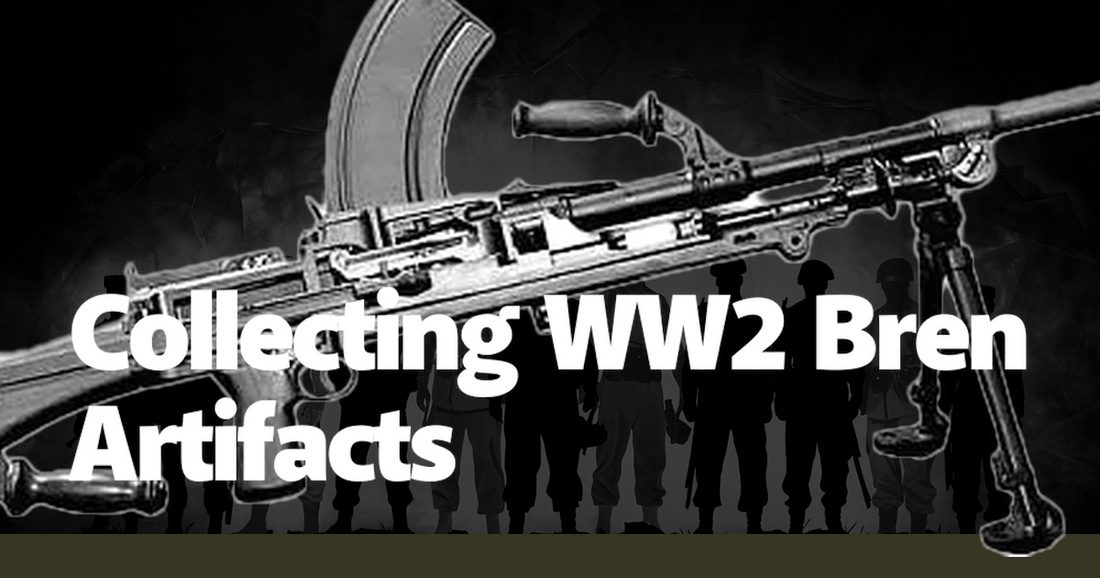Collecting World War II Bren artifacts is more than a hobby; it’s a deep dive into a pivotal moment in history, a tangible connection to the valor and sacrifice of those who fought. The Bren light machine gun, a cornerstone of British and Commonwealth forces, symbolizes resilience and tactical ingenuity. Collectors are often drawn to the intricate craftsmanship and the stories these artifacts carry. The Bren, with its distinctive top-mounted magazine and quick-change barrel, was a marvel of engineering that provided reliable firepower in various theaters of war. To hold a Bren part or accessory is to hold a piece of history, a fragment of a larger narrative that shaped the modern world.
The allure of Bren artifacts lies not just in their historical significance but also in their rarity and condition. Original Bren guns, due to stringent post-war regulations, are exceedingly rare. Most collectors focus on parts, accessories, and related memorabilia. A pristine Bren barrel, an original bipod, or a set of magazines can fetch a high price, especially if they come with provenance. Provenance, the documented history of an artifact, can significantly enhance its value and appeal. For example, a Bren barrel that saw action in the Normandy landings would be a prized possession, offering a direct link to one of the most significant military operations in history.
Collectors often become amateur historians, meticulously researching the origins and stories behind their artifacts. This research can lead to fascinating discoveries. Take, for instance, the story of a Bren gun recovered from the sands of Dunkirk. This particular piece, rusted and battered, was part of the desperate evacuation in 1940. Its recovery and preservation became a labor of love, involving careful restoration and extensive documentation. Such artifacts are not just objects; they are silent witnesses to the chaos and heroism of war, each scar and dent telling a story of its own.
The community of Bren collectors is a tight-knit group, bound by a shared passion for history and preservation. Online forums and social media groups provide a platform for sharing knowledge, trading parts, and discussing restoration techniques. These communities are invaluable for new collectors, offering guidance and support. Seasoned collectors often share their expertise, helping novices avoid common pitfalls and ensuring that the artifacts are preserved for future generations. The camaraderie within these groups reflects the broader spirit of historical preservation, a collective effort to keep the memory of the past alive.
Restoration of Bren artifacts is a meticulous process that requires a blend of technical skill and historical knowledge. Collectors must balance the desire to restore an artifact to its original condition with the need to preserve its historical integrity. For instance, replacing a rusted barrel might improve the appearance, but it could also erase the marks of its wartime service. The goal is often to stabilize the artifact, preventing further deterioration while retaining its character. This delicate balance is what makes restoration both challenging and rewarding, a true labor of love for those dedicated to preserving history.
The market for Bren artifacts is dynamic, influenced by factors such as historical anniversaries, media coverage, and global events. For instance, the 75th anniversary of D-Day saw a surge in interest and prices for related memorabilia. Auctions and military shows are key venues for acquiring rare pieces, but they also require a keen eye and thorough knowledge. Fakes and reproductions are a constant concern, making provenance and expert verification crucial. A well-documented artifact with a clear history is always preferable to an unverified piece, even if it appears to be in better condition.
Personal stories often add a poignant dimension to Bren artifacts. Consider the tale of a Bren magazine found in a French farmhouse, hidden away since the war. The farmer, a member of the French Resistance, had kept it as a memento of the British soldiers who had fought alongside him. Such artifacts are imbued with personal and emotional significance, transcending their material value. They serve as reminders of the human cost of war and the bonds forged in the crucible of conflict. Collecting these items is, in many ways, an act of remembrance, honoring the sacrifices of those who came before.
In conclusion, collecting World War II Bren artifacts is a pursuit that combines historical interest, technical skill, and a deep sense of respect for the past. Each artifact is a piece of a larger mosaic, a tangible link to the stories of courage, sacrifice, and innovation that defined the war. For collectors, these items are not just relics; they are living history, offering a window into a world that shaped our present. The passion for preserving these artifacts ensures that the legacy of the Bren gun and the soldiers who wielded it will endure, a testament to their enduring impact on history.

